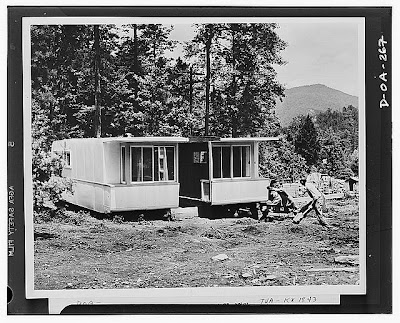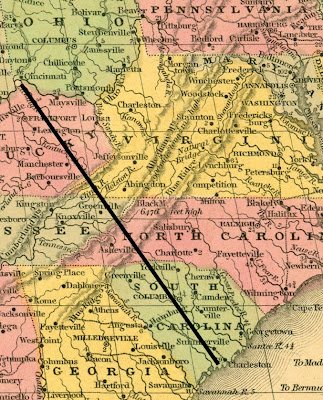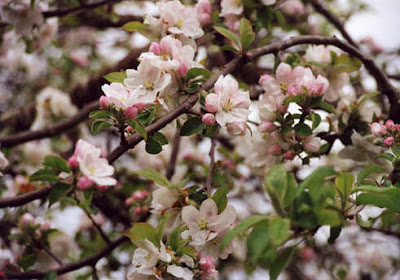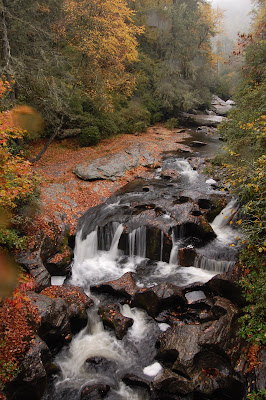If events proceed according to plan, I will watch this morning's sunrise from the deck of a boat crossing Fontana Lake. I anticipate a chilly voyage, but once we embark on the trail to Hazel Creek, it shouldn't take long to warm up. I've been assured that a much-needed rain is still one day away. It will be a time and a place to concentrate on the present moment, but I can't go near Fontana without recollecting how it used to be. I've always been intrigued by Fontana Village, though my first visit came long after it had morphed from a company town to a vacation resort. When a French existentialist toured Fontana, almost 80 years ago, he saw it as a harbinger of America's future. Maybe, in some sense, he was right...
If a victory is told in detail, one can no longer distinguish it from a defeat.
-Jean-Paul Sartre
One such [big government program] considered above criticism, sacred as motherhood, is TVA. This program started as a flood control project; the Tennessee Valley was periodically ravaged by destructive floods. The Army Engineers set out to solve this problem. They said that it was possible that once in 500 years there could be a total capacity flood that would inundate some 600,000 acres. Well, the engineers fixed that. They made a permanent lake which inundated a million acres. This solved the problem of floods, but the annual interest on the TVA debt is five times as great as the annual flood damage they sought to correct. Of course, you will point out that TVA gets electric power from the impounded waters, and this is true, but today 85 percent of TVA's electricity is generated in coal burning steam plants. Now perhaps you'll charge that I'm overlooking the navigable waterway that was created, providing cheap barge traffic, but the bulk of the freight barged on that waterway is coal being shipped to the TVA steam plants, and the cost of maintaining that channel each year would pay for shipping all of the coal by rail, and there would be money left over.
-Ronald Reagan, 1964
When the rich wage war, it's the poor who die.
-Jean-Paul Sartre
I’ve been wanting to write about the oldest and most successful land trust in the United States, the Celo Community in Yancey County, NC. I find it ironic that Celo’s founder, Arthur Morgan, was the first chairman of the Tennessee Valley Authority. But anytime the TVA is involved, you’ll find plenty of irony and paradox. The Celo story will have to wait.
During the early 1960s, Ronald Reagan adroitly exposed the contradictions of the Tennessee Valley Authority, and he paid a price it. A long time spokesman for General Electric, Reagan earned the scorn of GE (a major supplier of turbines to TVA) due to his continuing criticism of the agency as a problematic symptom of big government. In 1962, GE fired Reagan over his conservative rhetoric and that same year he officially changed his voter registration to the Republican Party.
A New Deal program created in 1933, the Tennessee Valley Authority was designed to provide flood control, electricity generation and economic development for the hard-hit Tennessee Valley region. While promising modernization and a better way of life for millions, TVA’s impact was tragic and destructive for many communities and individuals. Just ask the people who lived along the Little Tennessee River in Graham and Swain Counties. Homes, farms, schools, churches and stores were wiped out for Fontana Lake.

Jonathan Daniels, who traveled the South just before the commencement of the Fontana project, touted one side of the TVA paradox:
Nobody can see the South and its possibilities who does not see the Tennessee River and the meaning round it of the Tennessee Valley Authority. It is, as everybody knows, devoted to the use of the river, the planning of the river, the valley, and its resources for power, flood control, national defense, and soil improvement through both its technics and its phosphates. Actually, I think, its principal interest is people; and under David Lilienthal (he does not carry the full command but he has it), it is the single most stirring and hopeful agency in the South.
It is still not Eden: the river runs with its development by the signs of stupid land boom at Muscle Shoals, by tough little towns which wanted the government to give them cheap power to go with their cheap wages, by Scottsboro where the boys were tried, by Dayton, Tennessee, where the South's laws against evolution were reduced to dramatic and judicial farce. Not far east of it the worst soil erosion in the South has made a red desert of mountain tops. But along such a river a design for Southern living in terms of Southern possibility does grow. A traveler could not hope to see the signs of the present direction of the South without seeing that plan in its place.
The Great Smoky Mountains National Park, where the highest mountains, the finest remaining forests in the East are already saved for the future, lies properly on the road beyond TVA. The two contemplate both earth and men together, the dark mountain cabins by the steep cornfields, water and wash, man and mountain, a less steep pull, a more lasting America.
Even while Daniels was looking forward to the brighter tomorrows ushered in by the TVA, the government was accumulating photographs of homes and communities destined to disappear under the waters backing up behind the enormous dam.


Bushnell Hotel

The town of Judson

Churches in Judson

By 1943, the TVA had created a brand new town to accommodate the thousands of workers needed to build Fontana Dam. The following photos show pre-fabricated houses brought to Fontana from a factory in Michigan.


The dormitories and pre-fabs of Fontana Village were supplemented with a beauty parlor and a barber shop; a basketball court and a softball field; a post office, library, grocery, and soda stand; a dentist’s office and a small hospital; a movie theater; a school with a dozen teachers and 300 students; even a tiny jail. Over 90 percent of the town’s inhabitants were men.
"The striking thing," he wrote in Le Figaro, "is the lightness, the fragility of these buildings. The village has no weight, it seems barely to rest upon the soil; it has not managed to leave a human imprint on the reddish earth and the dark forest; it is a temporary thing."
# # #
Images and explanation of Kingston Coal-ash Sludge Disaster
http://www.youtube.com/watch?v=0OkI1gIgThw
From United Mountain Defense
http://unitedmountaindefense.org/
































